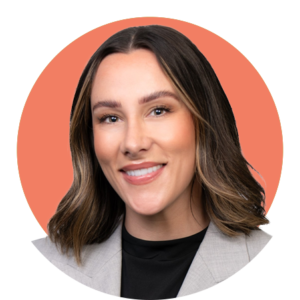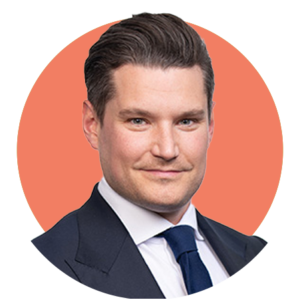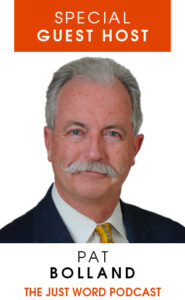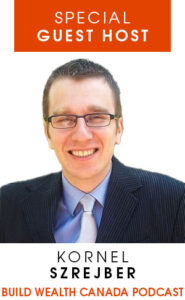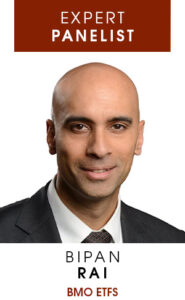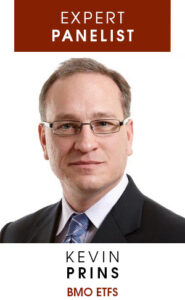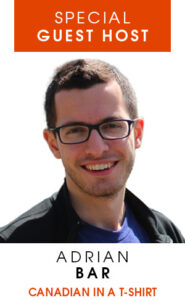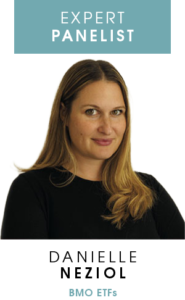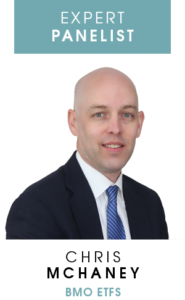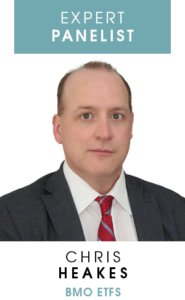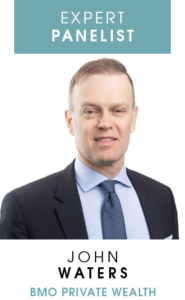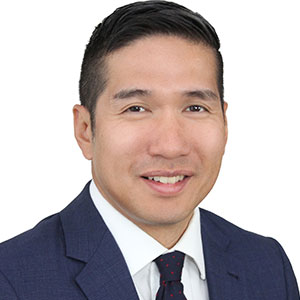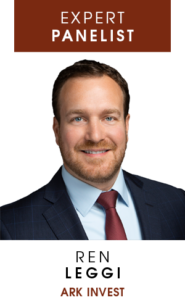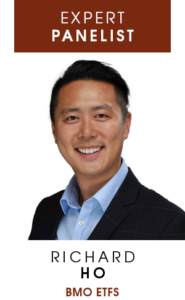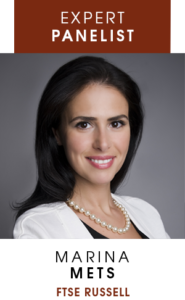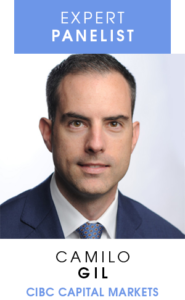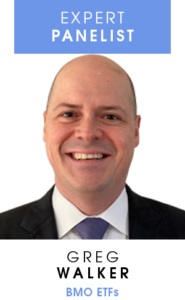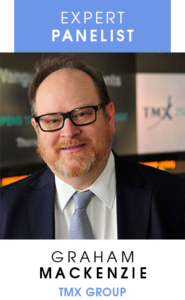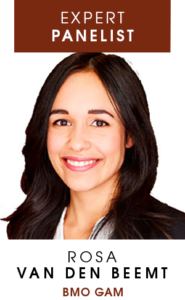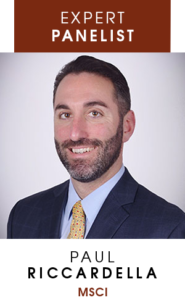SUMMARY:
- Macro risks are rising, and investors may need to rethink traditional portfolio strategies.
- Staying defensive doesn’t mean sitting out—smart tools can help manage risk and stay invested.
- DIY investors are embracing diversification through simple, long-term ETF solutions.
ETF Investor Day lit up the Toronto Stock Exchange on May 14 with an enthusiastic crowd and unmistakable energy.
Hosted by BMO ETFs and ETF Market Insights, the event gathered DIY investors, educators, and industry leaders for a day of practical ideas and thoughtful conversations. From macro risks to smarter portfolios, each session offered strategies to help investors take control of their financial future.
Whether you joined us in person or are catching up now, here’s a recap of each session and the insights that made them stand out.
1. TARIFFS, TAX CUTS, AND TROUBLE AHEAD?
Speaker: Bipan Rai, Managing Director, Head of ETF and Alternatives Strategy, BMO Global Asset Management (BMO GAM)
Bipan Rai kicked off the day with a macro update centered on U.S. trade policy and its global ripple effects.
“We’ve gone from a global system built around free trade to one defined by protectionism1. The average effective U.S. tariff rate is now over 20%—you know what other countries are north of 20%? Algeria and South Sudan. These are not economically liberal countries,” said Rai.
Still, he believes markets could return and exceed previous highs under three scenarios: the U.S. rolls back tariffs, enacts sweeping tax cuts, or the Fed cuts rates—though the latter seems unlikely soon.
Meanwhile, Rai warned that Canada’s economy is likely headed for a recession, with tariffs weighing on domestic consumption and employment. He also flagged a troubling disconnect between market prices and underlying fundamentals.
To help manage potential market volatility and uncertainty, BMO GAM suggests looking beyond the traditional 60/40 portfolio split. Instead, they suggest a more diversified approach – such as a 60/20/20 portfolio—60% equities, 20% fixed income, and 20% liquid alternatives.
Key takeaway: With uncertainty rising, investors should brace for volatility and think of ways to protect their portfolios against unexpected shocks.
2. HOW TO STAY DEFENSIVE (WITHOUT SITTING ON THE SIDELINES)
Speakers: Jimmy Xu, Managing Director, Head of Liquid Alternatives and Non-Linear ETFs, BMO GAM; Tony Dong, Founder, ETF Portfolio Blueprint
As markets climb, fear still lingers. Many investors respond by playing it too safe or trying to time the market. But that rarely ends well.
“If you’re a long-term investor saving for retirement over the next 20 or 30 years, the best thing to do is sit tight,” said Xu. “Over-trading is the enemy of growing our assets. Market timing is really difficult.”
Dong echoed the sentiment, reminding investors that “volatility is your price of admission for returns” that outpace risk-free Treasury bills. But that doesn’t mean investors should lean into high-volatility tech stocks or go all-in on the S&P 500.
“There have been periods—like from 1999 to 2009—when the real return of U.S. equities, as measured by the S&P 500, was zero,” said Dong.
To manage risk while still pursuing growth, the speakers pointed to strategies like gold, which acts as a reliable hedge and can be accessed via the BMO Gold Bullion ETF (ZGLD)2, and low-volatility equity approaches – such as the BMO Low Volatility Canadian Equity ETF (ZLB)3 – which invests in stocks that typically experience less volatility than the broader market.
“If you think about the market as the ocean with waves, a low-volatility stock is like a reliable tugboat that barely moves as everything else rocks around,” said Dong.
Another trend gaining traction is the move to covered call ETFs, which provide regular income that some investors see as a cushion against volatility. But both Dong and Xu cautioned against blindly chasing yield.
They urged investors to dig into how that income is generated and whether it’s simply their own capital being returned.
Key takeaway: Being defensive doesn’t mean staying on the sidelines. It means managing risk smartly and doing your homework, especially on high-yield products.
3. DIY WISDOM: THE RISE OF DIVERSIFIED ETF INVESTING
Speakers: Maxwell Nicholson, Co-Founder and CEO, Blossom; Braden Dennis, Co-Host, Canadian Investor Podcast
A clear theme emerged from the session: DIY investors are leaning into diversified ETFs, not just for returns, but for peace of mind.
“Asset allocation ETFs were one of the fastest-growing segments on Blossom last quarter. You sleep better at night when you’re not betting your whole portfolio on one area,” said Nicholson.
He noted that ETFs like the BMO All-Equity ETF (ZEQT)4 are gaining popularity on the platform, as they offer global equity exposure in one fund, without the need to pick and choose between multiple country ETFs.
Dennis added that more investors are realizing they don’t need to beat the market to succeed. They just need to stay with it.
“DIY investors are realizing that earning average market returns for 40 years can still put you well above average when it comes to building wealth,” he said.
Key takeaway: More investors are embracing diversified, long-term ETF strategies to simplify their portfolios, stay globally invested, and let compounding do the heavy lifting.
4. WATCHLIST-WORTHY IDEAS FROM THE EXPERTS
To close the day, a panel of ETF experts shared the key themes they believe investors should be watching—ranging from yield generation to long-term growth and portfolio resilience.
- BMO Gold Bullion ETF (ZGLD)2 Gold – A timeless hedge against uncertainty, now easily accessed through ETFs.
– Erin Allen, Director, Online Distribution, BMO ETFs - BMO AAA CLO ETF (ZAAA) 5 Collateralized Loan Obligations (CLOs) – High-quality cash flow with low duration and built-in credit protections.
– Valerie Grimba, Director, Institutional ETF Sales & Strategy, RBC Capital Markets - BMO Global Infrastructure Index ETF (ZGI) 6 Global Infrastructure – Reliable, inflation-linked cash flows from essential assets like utilities and transport.
– Tony Dong, Founder, ETF Portfolio Blueprint - BMO Target 2029 Canadian Corporate Bond Etf (ZXCQ)7 Target-Maturity Bonds – A way to lock in returns with defined maturity dates and ETF-level liquidity.
– Bipan Rai, Managing Director, Head of ETF and Alternatives Strategy, BMO Global Asset Management - BMO US Equity Buffer Hedged to CAD ETF – July (ZJUL)8 S. Equities – Despite volatility, the S&P 500 remains a core growth allocation within a diversified portfolio. Investors can look to Buffer ETFs to provide downside protection on their S&P 500 exposure.
– Larry Berman, Chief Investment Officer, QWealth Partners
Key takeaway: Whether you’re looking for inflation protection, income, or long-term growth, there’s no shortage of ETF tools to help you build a portfolio that fits your strategy.
FINAL TAKEAWAYS
Throughout the day, a clear theme emerged: Volatility isn’t going anywhere, but investors now have more tools than ever to manage it. DIY investors are embracing ETFs that offer greater diversification, higher income, and more tailored exposure to meet their goals.
Understand your time horizon. Know what’s under the hood of your ETFs. Build a portfolio based on your goals – not the headlines.
- Video: Please find video of the market open here.
- Future events: Subscribe to our newsletter for future events and ETF insights
- ETF screener: Find and compare different BMO ETFs using our filtering tool.
SOURCES:
- Protectionism: Protectionism refers to government policies that restrict international trade to help domestic industries. https://www.investopedia.com/terms/p/protectionism.asp
- BMO Gold Bullion ETF (ZGLD) as of April 30, 2025, YTD 21.30%, 1Y 43.01%, Inception Date Mar 4, 2024
- BMO Low Volatility Canadian Equity ETF (ZLB) as of April 30, 2025, YTD 8.80%, 1Y 22.84%, 3Y 10.58%, 5Y 14.08%, 10Y 9.42%, SI 12.28%. Inception Date October 21, 2011
- BMO All-Equity ETF (ZEQT) as of April 30, 2025, YTD -3.08%, 1Y 12.75%, 2Y 14.25%, 3Y 11.79%, SI 9.41%, Inception Date Jan 24, 2022
- BMO AAA CLO ETF (ZAAA) Inception date Apr 30, 2025, no data available under 1 year.
- BMO Global Infrastructure Index ETF (ZGI) as of April 30, 2025, YTD 3.08%, 1Y 27.42%, 2Y 12.69%, 3Y 8.36%, 5Y 10.60%, 10Y 7.81%, Since Inception 11.65%.
- BMO Target 2029 Canadian Corporate Bond Etf (ZXCQ) Inception date Mar 18, 2025, no data available under 1 year.
- BMO US Equity Buffer Hedged to CAD ETF – July (ZJUL) Inception date Jun 27, 2024, no data available under 1 year.
Duration: A measure of the sensitivity of the price of a fixed income investment to a change in interest rates. Duration is expressed as number of years. The price of a bond with a longer duration would be expected to rise (fall) more than the price of a bond with lower duration when interest rates fall (rise).
Liquidity: The degree to which an asset or security can be quickly bought or sold in the market without affecting the asset’s price. Cash is considered to be the most liquid asset, while things like fine art or rare books would be relatively illiquid.
Volatility: Measures how much the price of a security, derivative, or index fluctuates. The most commonly used measure of volatility when it comes to investment funds is standard deviation.
BMO Buffer ETFs seeks to provide income and appreciation that match the return of a Reference Index up to a cap (before fees, expenses and taxes), while providing a buffer against the first 15% (before fees, expenses and taxes) of a decrease in the Reference Index over a period of approximately one year, starting from the first business day of the stated outcome period.
Disclaimers
The viewpoints expressed by the author represents their assessment of the markets at the time of publication. Those views are subject to change without notice at any time. The information provided herein does not constitute a solicitation of an offer to buy, or an offer to sell securities nor should the information be relied upon as investment advice. Past performance is no guarantee of future results. This communication is intended for informational purposes only.
All investments involve risk. The value of an ETF can go down as well as up and you could lose money. The risk of an ETF is rated based on the volatility of the ETF’s returns using the standardized risk classification methodology mandated by the Canadian Securities Administrators. Historical volatility doesn’t tell you how volatile an ETF will be in the future. An ETF with a risk rating of “low” can still lose money. For more information about the risk rating and specific risks that can affect an ETF’s returns, see the BMO ETFs’ simplified prospectus.
This article is for information purposes only. The information contained herein is not, and should not be construed as investment, tax or legal advice to any party. Particular investments and/or trading strategies should be evaluated and professional advice should be obtained with respect to any circumstance.
This yield is calculated by taking the most recent regular distribution, or expected distribution, (excluding additional year end distributions) annualized for frequency, divided by current NAV. The yield calculation does not include reinvested distributions.
Distribution yields are calculated by using the most recent regular distribution, or expected distribution, (which may be based on income, dividends, return of capital, and option premiums, as applicable) and excluding additional year end distributions, and special reinvested distributions annualized for frequency, divided by current net asset value (NAV). The yield calculation does not include reinvested distributions.
(Bold) Distributions are not guaranteed, may fluctuate and are subject to change and/or elimination. Distribution rates may change without notice (up or down) depending on market conditions and NAV fluctuations.
The payment of distributions should not be confused with the BMO ETF’s performance, rate of return or yield. If distributions paid by a BMO ETF are greater than the performance of the investment fund, your original investment will shrink. Distributions paid as a result of capital gains realized by a BMO ETF, and income and dividends earned by a BMO ETF, are taxable in your hands in the year they are paid.
Your adjusted cost base will be reduced by the amount of any returns of capital. If your adjusted cost base goes below zero, you will have to pay capital gains tax on the amount below zero.
Cash distributions, if any, on units of a BMO ETF (other than accumulating units or units subject to a distribution reinvestment plan) are expected to be paid primarily out of dividends or distributions, and other income or gains, received by the BMO ETF less the expenses of the BMO ETF, but may also consist of non-taxable amounts including returns of capital, which may be paid in the manager’s sole discretion. To the extent that the expenses of a BMO ETF exceed the income generated by such BMO ETF in any given month, quarter, or year, as the case may be, it is not expected that a monthly, quarterly, or annual distribution will be paid. Distributions, if any, in respect of the accumulating units of BMO Short Corporate Bond Index ETF, BMO Short Federal Bond Index ETF, BMO Short Provincial Bond Index ETF, BMO Ultra Short-Term Bond ETF and BMO Ultra Short-Term US Bond ETF will be automatically reinvested in additional accumulating units of the applicable BMO ETF. Following each distribution, the number of accumulating units of the applicable BMO ETF will be immediately consolidated so that the number of outstanding accumulating units of the applicable BMO ETF will be the same as the number of outstanding accumulating units before the distribution. Non-resident unitholders may have the number of securities reduced due to withholding tax. Certain BMO ETFs have adopted a distribution reinvestment plan, which provides that a unitholder may elect to automatically reinvest all cash distributions paid on units held by that unitholder in additional units of the applicable BMO ETF in accordance with the terms of the distribution reinvestment plan. For further information, see the distribution policy in the BMO ETFs’ simplified prospectus.
Past Performance is not indicative of future results.
An investor that purchases Units of a Structured Outcome ETF other than on the first day of a Target Outcome Period and/or sells Units of a Structured Outcome ETF prior to the end of a Target Outcome Period may experience results that are very different from the target outcomes sought by the Structured Outcome ETF for that Target Outcome Period. Both the cap and, where applicable, the buffer are fixed levels that are calculated in relation to the market price of the applicable Reference ETF and a Structured Outcome ETF’s NAV (as Structured herein) at the start of each Target Outcome Period. As the market price of the applicable Reference ETF and the Structured Outcome ETF’s NAV will change over the Target Outcome Period, an investor acquiring Units of a Structured Outcome ETF after the start of a Target Outcome Period will likely have a different return potential than an investor who purchased Units of a Structured Outcome ETF at the start of the Target Outcome Period. This is because while the cap and, as applicable, the buffer for the Target Outcome Period are fixed levels that remain constant throughout the Target Outcome Period, an investor purchasing Units of a Structured Outcome ETF at market value during the Target Outcome Period likely purchase Units of a Structured Outcome ETF at a market price that is different from the Structured Outcome ETF’s NAV at the start of the Target Outcome Period (i.e., the NAV that the cap and, as applicable, the buffer reference). In addition, the market price of the applicable Reference ETF is likely to be different from the price of that Reference ETF at the start of the Target Outcome Period. To achieve the intended target outcomes sought by a Structured Outcome ETF for a Target Outcome Period, an investor must hold Units of the Structured Outcome ETF for that entire Target Outcome Period.
CLOs are floating- or fixed-rate debt securities issued in different tranches, with varying degrees of risk, by trusts or other special purpose vehicles (“CLO Issuers”) and backed by an underlying portfolio consisting primarily of below investment grade corporate loans. The BMO ETF pursues its investment objective by investing, under normal circumstances, at least 85% of its net assets in CLOs that, at the time of purchase, are rated AAA or the equivalent by a nationally recognized statistical rating organization.
AAA herein refers to the order of payments, should there be any defaults, and does not represent the ratings of the underlying loans within the CLO. If there are loan defaults or the CLO Issuer’s collateral otherwise underperforms, scheduled payments to senior tranches take precedence over those of mezzanine tranches (a tranche or tranches subordinated to the senior tranche), and scheduled payments to mezzanine tranches take precedence over those to subordinated/equity tranches. The riskiest portion is the “Equity” tranche, which bears the first losses and is expected to bear all or the bulk of defaults from the corporate loans held by the CLO Issuer serves to protect the other, more senior tranches from default.
Commissions, management fees and expenses all may be associated with investments in exchange traded funds. Please read the ETF Facts or simplified prospectus of the BMO ETFs before investing. The indicated rates of return are the historical annual compounded total returns including changes in unit value and reinvestment of all dividends or distributions and do not take into account sales, redemption, distribution or optional charges or income taxes payable by any unitholder that would have reduced returns. Exchange traded funds are not guaranteed, their values change frequently and past performance may not be repeated.
For a summary of the risks of an investment in the BMO ETFs, please see the specific risks set out in the BMO ETF’s simplified prospectus. BMO ETFs trade like stocks, fluctuate in market value and may trade at a discount to their net asset value, which may increase the risk of loss. Distributions are not guaranteed and are subject to change and/or elimination.
BMO ETFs are managed by BMO Asset Management Inc., which is an investment fund manager and a portfolio manager, and a separate legal entity from Bank of Montreal.
BMO Global Asset Management is a brand name under which BMO Asset Management Inc. and BMO Investments Inc. operate.
“BMO (M-bar roundel symbol)” is a registered trademark of Bank of Montreal, used under licence.








